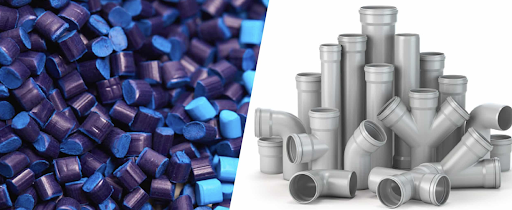PVC injection moulding isn’t new. But how it’s done today feels very different from what it used to be. PVC, or polyvinyl chloride, sits in a strange spot between rigid and flexible. It’s in plumbing pipes, electrical parts, and even medical tools. What makes it interesting is not just what it’s used for—it’s how it’s handled.
PVC isn’t an easy material. It doesn’t melt smoothly like some plastics. If it overheats, it burns and gives off gas. That means temperature control matters a lot. The operator has to know when the material feels right, not just what the gauge says. The goal is simple: fill the mould evenly, avoid air pockets, and make each part identical. But that’s easier said than done.
A Process Built on Precision
The making starts with the mix. PVC powder alone isn’t enough. It needs stabilizers, lubricants, and plasticizers to give it the right balance of strength and flexibility. Once that’s ready, the mix goes into the machine. Inside, heat softens it just enough. Then pressure forces the molten PVC into the mould.
Timing is everything here. The material can’t be too hot or too cold. Heat it too much, and it degrades. Too little, and it freezes before filling the shape. The injection happens in seconds, but every fraction of that second matters. Cooling follows right after. It sounds simple—just let it cool—but cooling too fast can warp the part. Cooling too slow wastes time and energy.
A finished part that looks perfect to the eye might still hide internal stress if cooling was uneven. That’s why engineers keep improving how moulds are built. Some moulds now have special cooling channels shaped exactly like the part. This keeps temperature steady. It’s the quiet detail that separates good parts from great ones. PVC injection moulding is, at its core, a game of control.
Why PVC Still Matters
Plastics have evolved. New materials show up every few years. Yet PVC stays. It’s strong, affordable, and built to last. It resists sunlight, chemicals, and impact. In construction, it outlives many other materials. In electrical work, it doesn’t conduct, which keeps it safe. It’s this balance that makes it hard to replace.
Economics play a big role too. The process wastes very little. Any leftover PVC can be ground down and reused. That saves both cost and material. Factories that produce thousands of parts every day can recycle within the same line. It’s a quiet efficiency that pays off.
Designers also like PVC because it’s flexible in how it’s shaped. Thin sections, textured surfaces, curved forms—it can handle them all. Many materials fail when pushed to complex shapes. PVC holds steady. That’s why industries that care about detail keep coming back to PVC injection moulding, even when trendier options appear.
Challenges That Demand Experience
Still, it’s not a forgiving process. A small mistake can spoil a batch. Even a few degrees off can ruin the texture or cause bubbles. Moisture in the material? That can create blisters. A mould that’s not perfectly vented? Air traps and marks appear. It’s a long list of small things that can go wrong.
The machines themselves need care. When PVC overheats, it releases gas that can corrode metal. Over time, that eats away at the mould. That’s why many use stainless steel or special coatings like nickel. It’s expensive, but cheaper than constant repair. Even the screw that pushes the material forward has to be designed a certain way. Too much shear breaks down the polymer. Too little, and the melt never mixes right.
People who’ve worked with PVC for years often rely on instinct. They can tell by smell or sound if something’s off. It’s not written in manuals. It’s learned through repetition, through mistakes. Technology helps—modern machines now use sensors that detect tiny temperature shifts and adjust automatically—but experience still leads the way.
Looking Toward the Future
In the end, PVC’s strength isn’t in its novelty. It’s in its balance. Every piece made through this method carries a quiet kind of precision, shaped through patience and control. Behind each product is a worker who understands how far to push the heat, when to slow the pressure, and when to trust their hands more than their machines. PVC injection moulding keeps proving that even old materials, when handled with care, still have room to surprise us.

